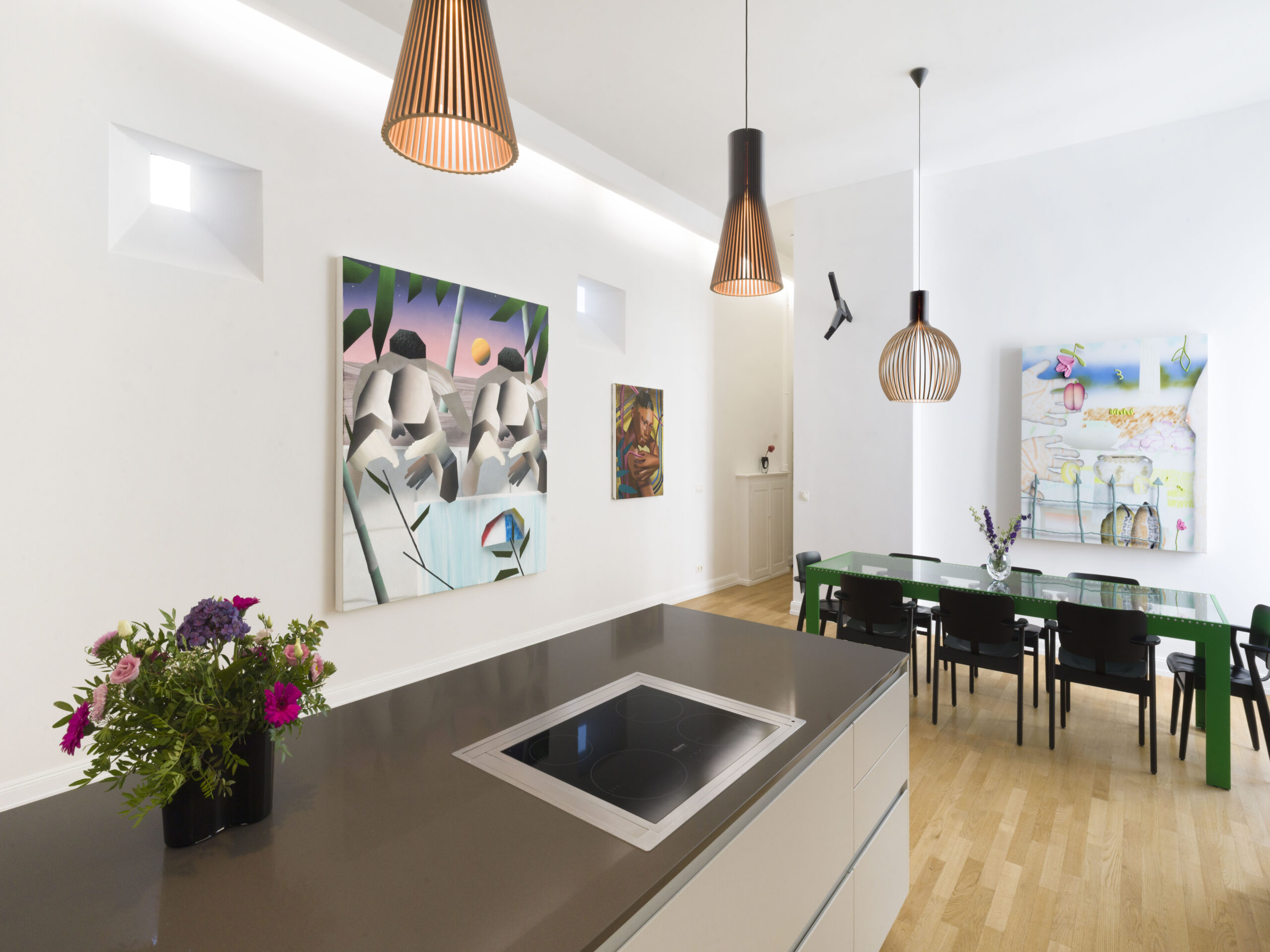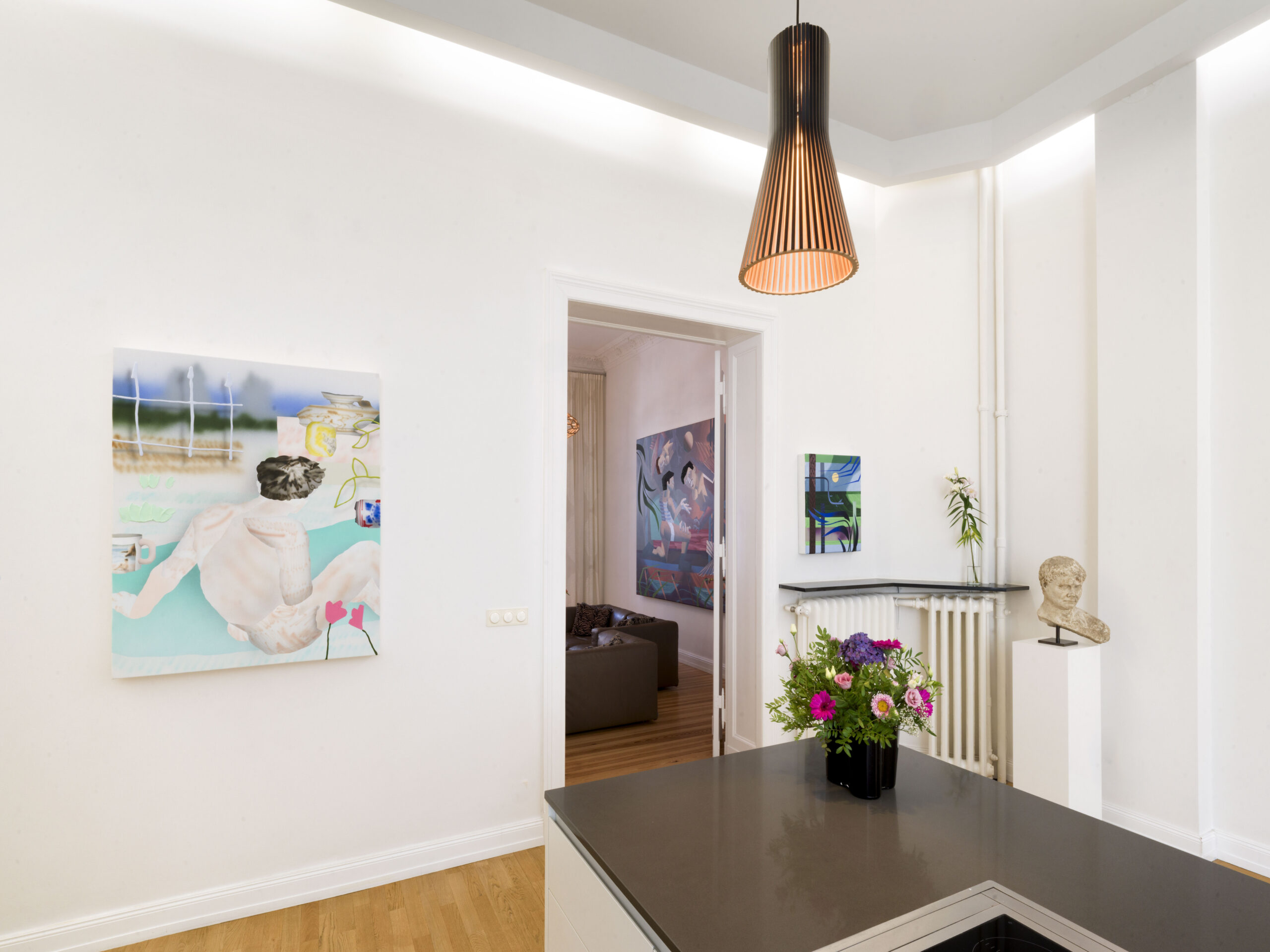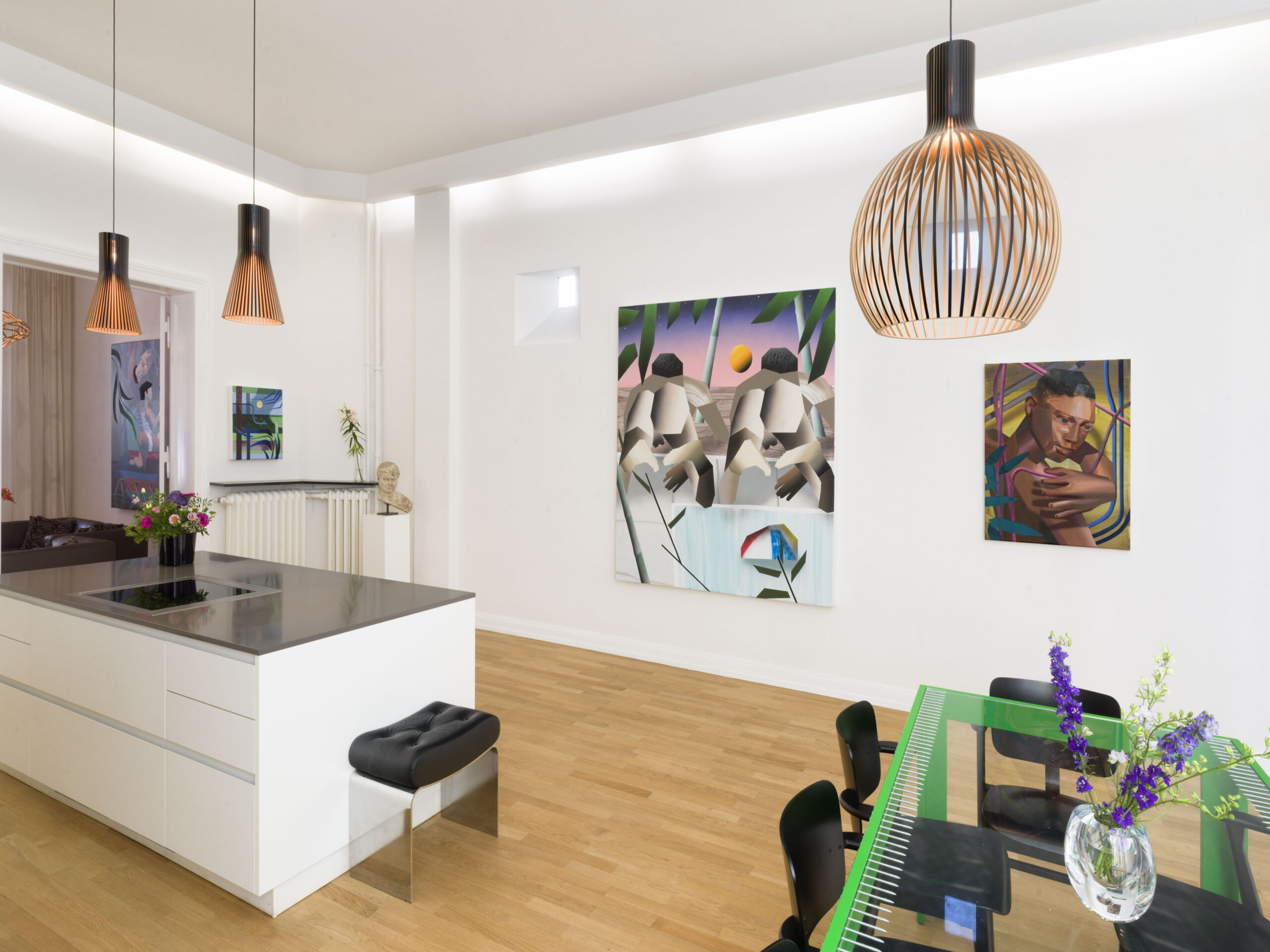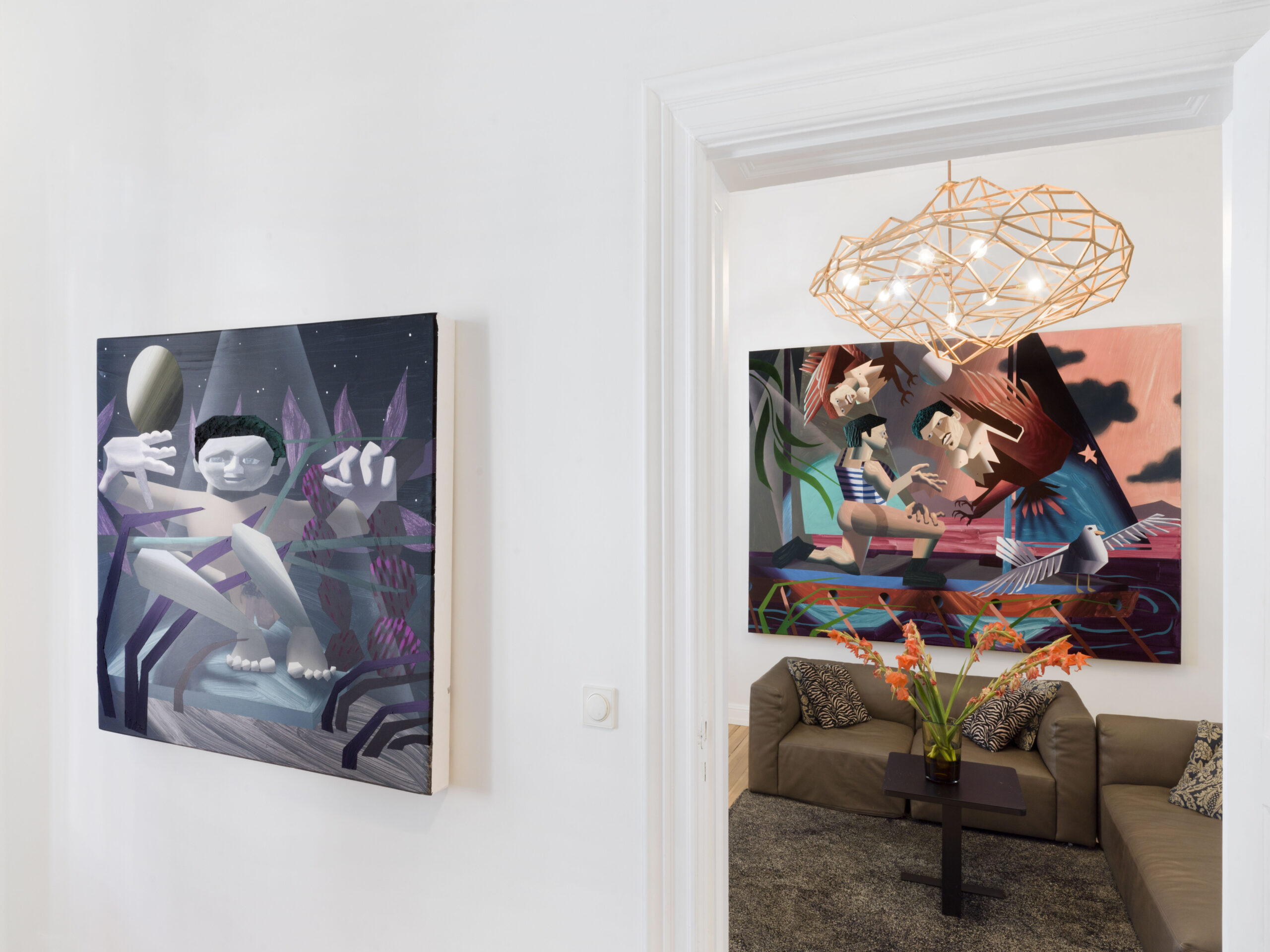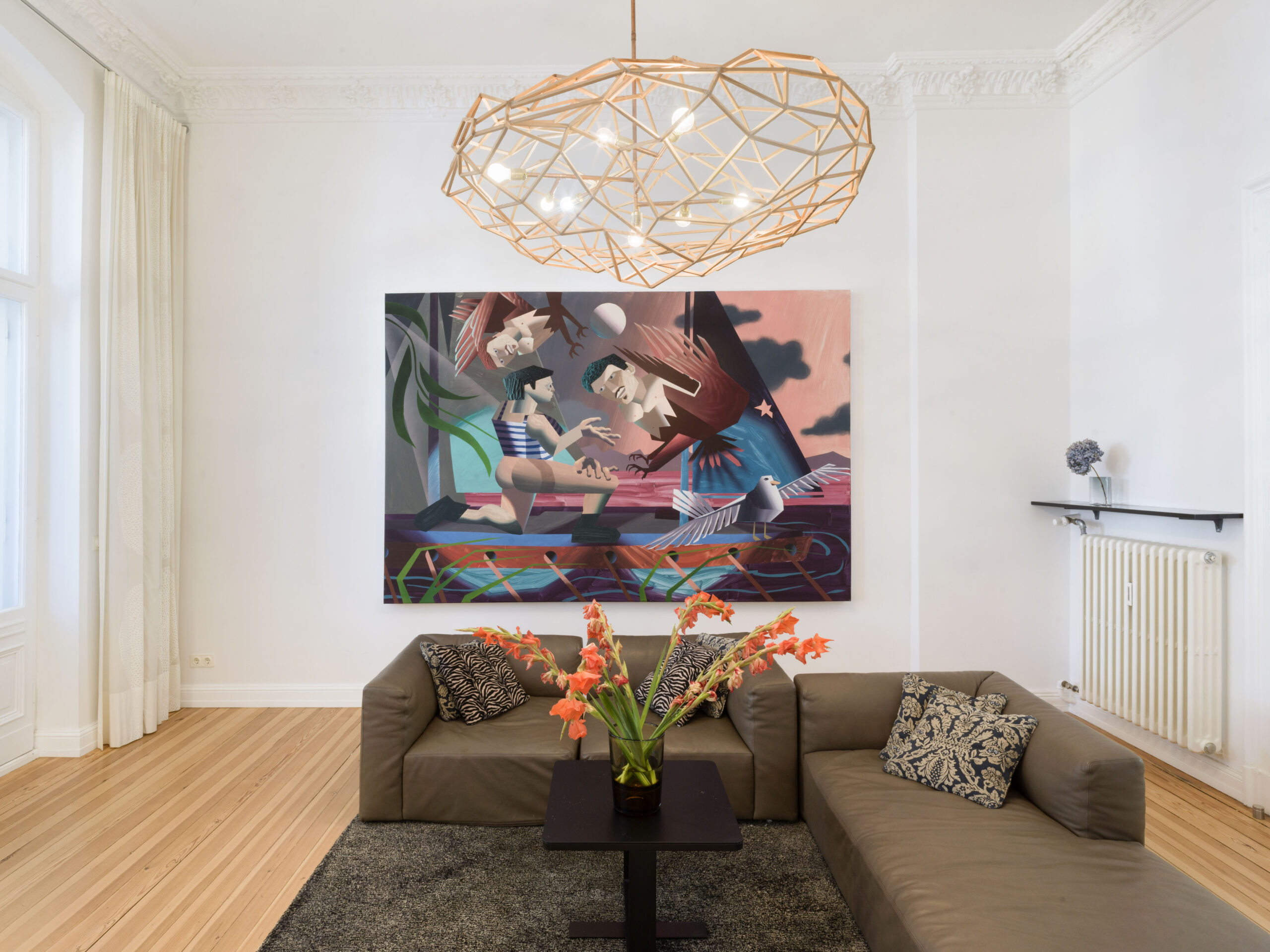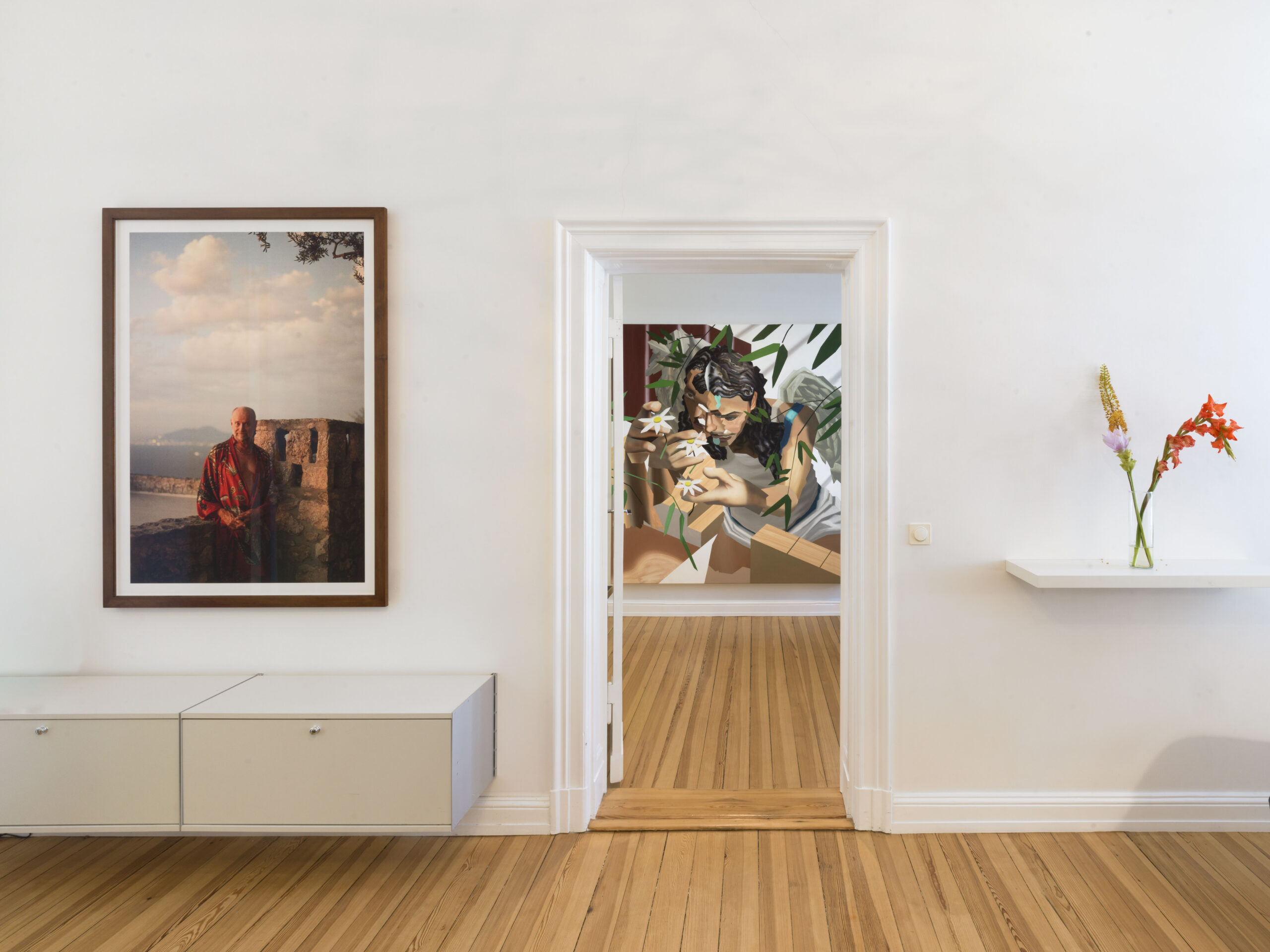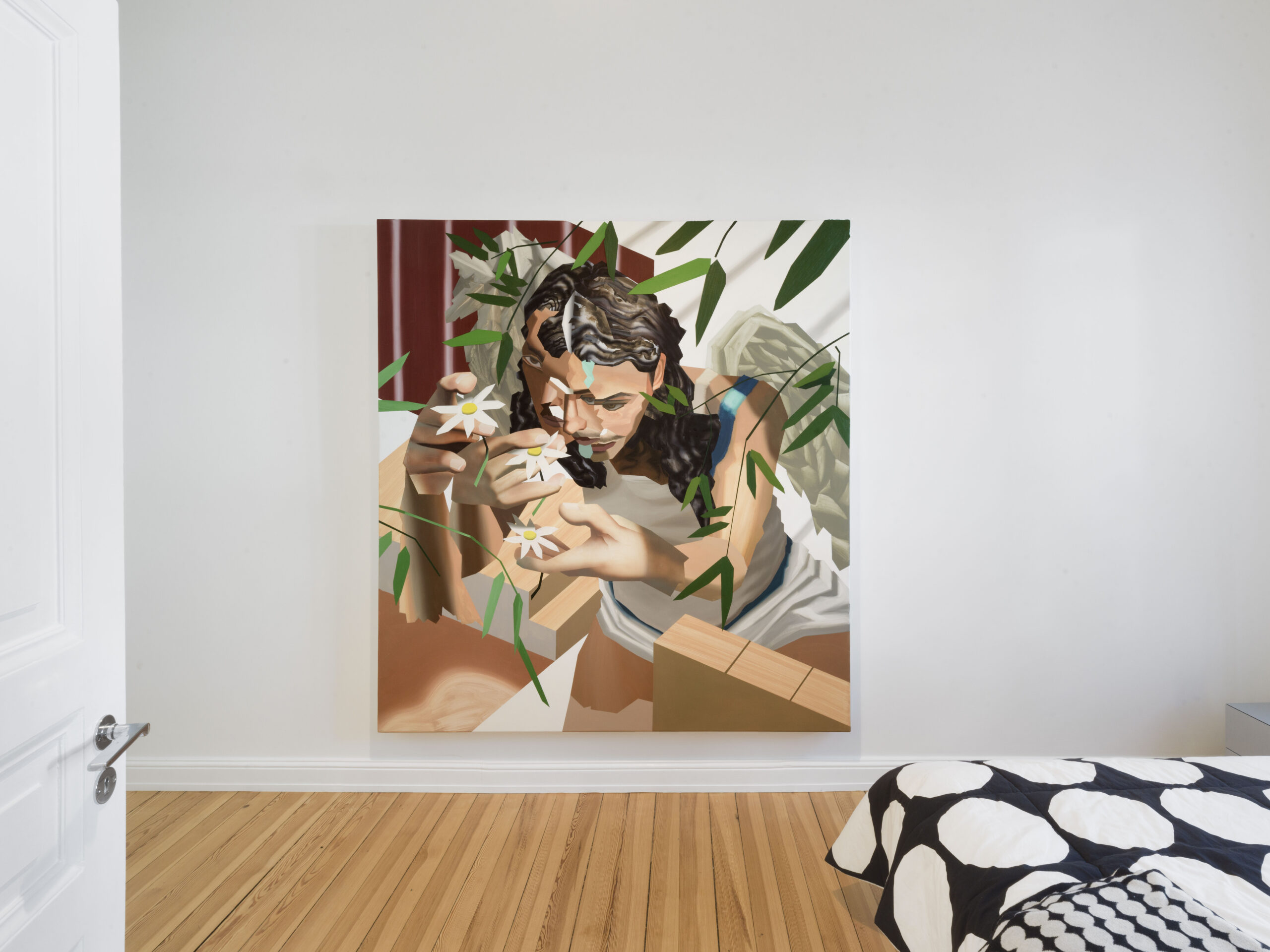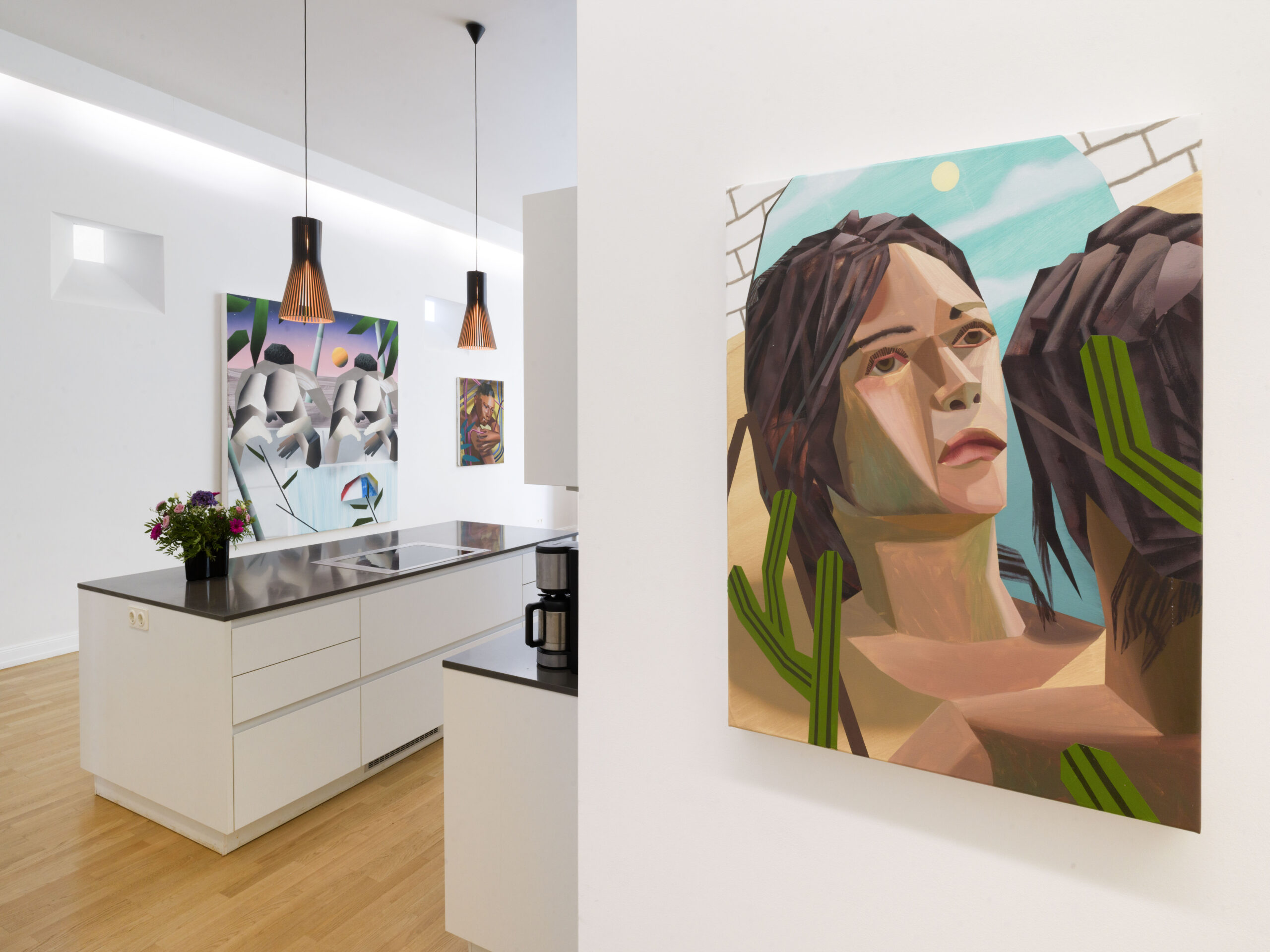BRANDON LIPCHIK
Image: Brandon Lipchik, Moonrise, 2021, Photo credits Miettinen Collection
17 May – 27 September 2025
Special opening times during BERLIN ART WEEK:10 -14 September 2025, 12-6 pm
Visits and guided tours are possible every Saturday between 12 and 6 pm.
During the summer and Berlin Art Week 2025, Miettinen Collection is pleased to show works of Brandon Lipchik in collector’s private apartment. We present new works by the artist in collaboration with Galerie Robert Grunenberg as well as older works from the Miettinen Collection.
Brandon Lipchik was born in Erie, (US), in 1993. Lives and works in Berlin, (DE). Brandon Lipchik’s images, rendered on the computer and then transferred to canvas by hand, deconstruct different perspectives and layer them together to create a multi-perspective visual collage.

